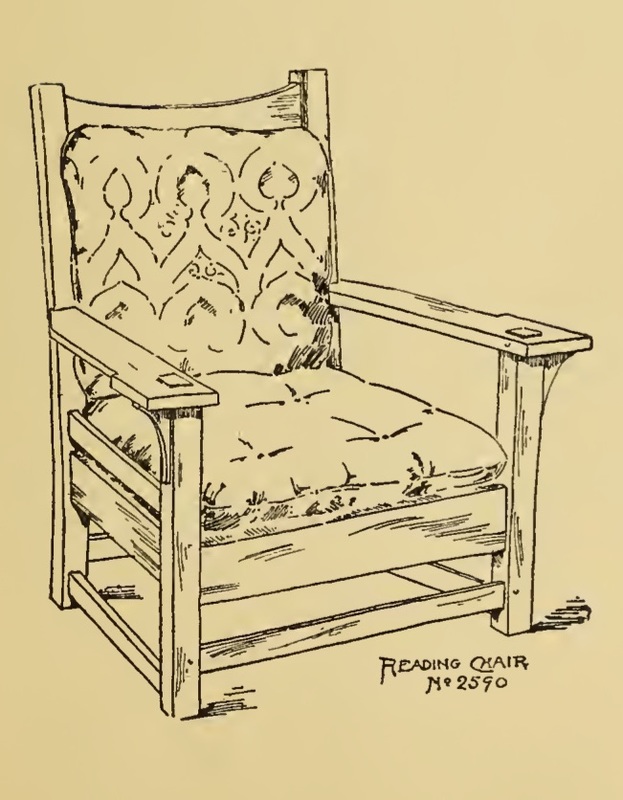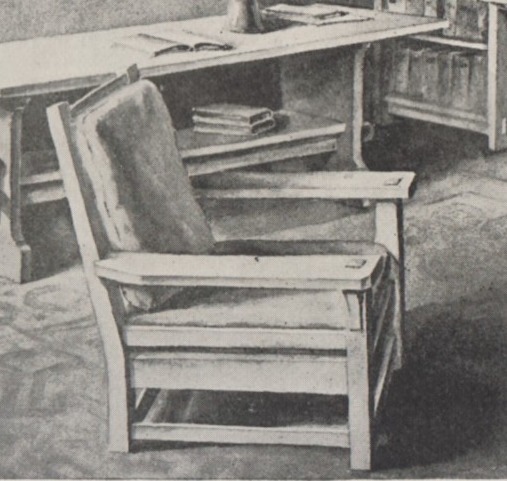Reading Chair (no. 2590)
Item
Title
Reading Chair (no. 2590)
Creator
United Crafts
Date
1901-02 (ca.)
Medium
Ash
Object No.
2018.19.10
Credit line
Gift of Gregg and Monique Seibert
Description
Reading, for many at the turn of the twentieth century, was more than idle distraction and formed part of a general regiment of self-improvement that required discipline, presence, and was a means to cultivate attention. Amongst those advocating most forcefully for these positions was Brother Azarias, an Irish-American educator and author whose time teaching in Albany and subsequent rise to prominence made him amply covered in the upstate New York press. In an 1890 lecture for De La Salle Institute in New York (subsequently published as Books and Reading), Azarias noted that “Mere revery [sic] or listlessness is a hopeless scattering of brain-force. It were well for us all to understand that mental inaction is not resting; it is rusting. It is a corrosion of the faculties and renders them less efficient for future action.” A dedicated reading chair, helped “focus the attention during the time of reading in such a manner that the mind becomes wholly occupied with the reading matter,” as Azarias recommended.
In many ways, Azarias’s views about the need for sustained critical thinking and intellectual reading are part of a broader movement that help to explain some of the more esoteric and generally dense articles found in the earliest issues of The Craftsman. Seemingly concerned with the idea that “mental inaction is not resting; it is rusting,” Irene Sargent and Stickley balanced articles that promoted the firm’s aesthetic philosophies with summaries of Prince Kropotkin’s economic theories, the economic foundation of art, William Morris’s Socialist career, and reviews of literature. Although ostensibly related to the handicrafts that Stickley’s firms produced, the early magazine reads today more as a means to (and encouragement of) self-betterment through education and informed discourse.
Associated names
Gustav Stickley
Provenance
Purchased, en suite, by an undisclosed buyer, ca. 1901, then by descent. Dalton’s American Decorative Arts and Antiques (September 2001). Cathers and Dembrosky (by 2002). Gregg and Monique Seibert (2002).


